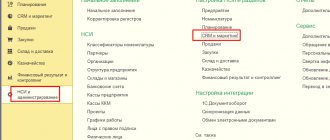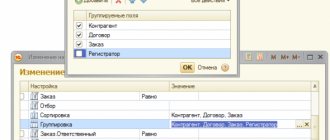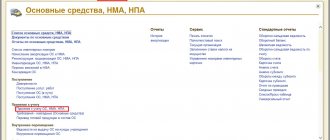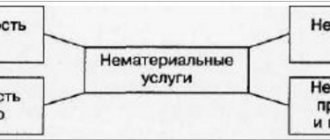When the customer, after you have provided him with a service, signs the act, you have in your hands documentary evidence of the fulfillment of obligations. And if suddenly the customer begins to refuse to accept the result of the work, you can resolve all issues with this document.
But in the case of remote services, such as online education or consultations via Skype, acts are not signed. In case of disputes, the lack of documents can turn against both the customer and the contractor. Let's talk about how to protect yourself.
What is a public offer
In order not to depend on the signing of an act when providing remote services, it is convenient to use a public offer that you post on the website, and ideally, everyone who wants to order services from you should read it.
A public offer is one of the ways to conclude an agreement; in it you establish the procedure for providing your services, the rights and obligations of the parties and other conditions related to your activities. At the same time, the customer cannot make changes to the text, but he has the right not to buy anything from you when the terms of the offer do not suit him.
If the customer is satisfied with everything that is written in the public offer, he accepts it ─ performs those actions that mean his agreement with the terms, for example, clicks the “Order” button, transfers payment. When the customer does not like something in an offer, he should not accept it.
You must indicate your data in the document, for example, “Individual entrepreneur Ivan Ivanovich Ivanov, INN 125896597525, State Registration Number 358583000170581 dated 03/01/2017”, since by law the parties to the contract must be identifiable. And to collect information about the customer, you need to provide a special form on the website.
Remember, when you paid for someone’s information products or services, they also asked for your full name, phone number and email.
Performers, customers and accounting object
The provision of a service is nothing more than the production and sale of an intangible good. Suppliers and buyers can be government agencies, individual entrepreneurs, organizations, individuals. Interaction between the parties to legal relations produces results. It is, in essence, a service.
Services, unlike products, are intangible. They are individual in nature (provided to groups of consumers or specific consumers upon request, and can be transformed in accordance with the current needs of customers). Services are not subject to transportation or storage. They do not accumulate and do not act as assets. In space and time, production and consumption of services are strictly interconnected.
A number of features of the accounting object play a special role in their reflection in registers and databases. Services are provided upon request for their provision. Consumption and demand are inextricably linked. Resale of services is not provided for by current legislation.
Acceptance of offer
You need to think about ─ what action of the customer will be considered acceptance of the offer. In other words, what will confirm the fact that the customer agreed to buy the service on your terms.
For example, this could be putting a mark in a special checkbox on the order form, next to which it is written: “I have read and agree with the terms of the Public Offer and the procedure for paying for the order.” In this case, the words “Public offer” must be formatted as a link to the website page with the offer. It is important that the “checkbox” is not set by default and the order form does not skip empty fields, for example, the “Order” button does not become active.
The customer must consciously click on the checkbox, and you do not need to check whether he followed the link to the page with the offer or not. If the customer ticks the box without reading the documents, this is his responsibility; the contract will still be considered “signed”.
Another option for acceptance is payment of the invoice. You can issue an invoice to each client for payment, send it by email, in the letter give a link to the offer, which is located on your website, and once again remind that transfer of money means acceptance of the offer.
Important terms of the offer that will help prove the completion of the service
The customer's agreement with the terms of the contract does not mean that you have provided the service. To confirm this fact, you need to include special conditions in the offer:
1. Communication channel . Indicate the method in which you plan to contact the customer when performing the service, and provide a corresponding field in the form for customers.
For example, according to the offer, you must send the report by mail specified by the customer. Be sure to fulfill this condition, using exactly the address indicated by the recipient of the service, since in court a report sent via instant messenger or social networks will not be evidence. The same applies to online consultations. If it is written in the offer that it is carried out, for example, on Skype, then that is where you should communicate with the client.
2. The moment of completion of the service and the period of its provision. Such conditions in the offer are necessary so that both you and the customer equally understand the boundaries of your contractual relationship.
After the service is provided, a refund can only be due to poor-quality service, but while both you and the customer are in the process, he can partially return his money. Also, the deadline for filing a claim will be counted from the end date of the service.
For example, for a consultation, this may be the end of the consultation time on the day it was held, if its duration is indicated in the offer; for online training, the end of the provision of training services ─ the specific end date of the course or the day of the last webinar.
3. The period during which the client can send you complaints , and the condition that after the expiration of the specified period, if no complaints have been received from the customer, the service is considered to be provided in full.
4. The client’s responsibility is to confirm receipt of a letter from you with the result of the service ─ a report or other document. E-mail also has problems with delivery, so it is important to write in the offer that the customer must, for example, within three days after the set date for receiving the result, report that he has not received any letters from you. If there is no confirmation and no letter of non-receipt of the result, the service is considered provided.
What else can you do to ensure that you have fully met your obligations? Keep records of online consultations, all emails in which you sent invoices for payment, work results, such as reports and confirmations from clients.
Accounting with a service provider
Performers cooperate with individuals, individual entrepreneurs, and organizations. If the customer is a business entity, the accountant reflects income from the provision of services on account 62. Cooperation with individuals involves the use of accounts 51, 50 when paying by card and cash, respectively.
As for wiring, here's an example:
- Provision of service – Dt62 or 51.50 Kt90.
- Payment for services through a bank or cash desk – Dt51 or 50 Kt62
- VAT accrual for OSNO – Dt90.3 Kt68.2
The next focus point is basic costs. The service is intangible, and often no direct material costs are required to provide it. This is how auditing, insurance, legal and accounting consulting work. The main costs in such cases include the services of third-party suppliers (rent, for example), taxes and contributions, and employee salaries. To account for costs, account 20 is used. The service provider's accountant makes the following entries:
- Cost accounting – Dt20 Kt70 or 76, 69, 60
- Write-off of costs for the cost of services – Dt90.2 Kt20
Another thing is the provision of services using customer materials.
The received inventory items are recorded in the corresponding off-balance sheet account.
Specific is the accounting for receipt of services from third parties. If a supplier engages counterparties, he cannot directly resell their services. He will have to purchase an incoming service, assign expenses to the appropriate expense accounts, or increase the cost of inventory items. Moreover, cost accounting cannot be deferred, since the service provided cannot be stored like a product.
If the provision of services requires the organization of production (as, for example, in outdoor advertising or printing), the company maintains production records, distributing expenses into general business, general production and related to auxiliary production. To account for them, accounts 26, 25 and 23 are used. Postings may look like this:
- Attribution of costs to finished products – Dt20 or 26, 25, 23 Kt10 or 70, 69, 60
- Distribution of overhead exits – Dt20 Kt26 or 25
- Formation of cost – Dt43 Kt23 or 20
- Write-off of general business expenses and prime costs – Dt90.2 Kt26 or 43
Providers in the service sector either do not encounter work in progress or encounter it to a minimum. You can clarify the nuances of accounting, if available, with the specialists of our company.
Let's sum it up
A public offer on the website, its acceptance and confirmation of the provision of services will not protect you from the claim and lawsuit of a dissatisfied customer, since the court is obliged to accept any complaints, and already at the meeting finds out whether the service was provided. All your actions are necessary so that you can prove that you are right.
If you have a website, in addition to the public offer, you may need other documents that are necessary to comply with the law or your interests. We have prepared 5 questions that will help you create a list of necessary documents.
Find out what documents your site needs
Attention!
“Right on the Network” can draw up a public offer for you, taking into account the specifics of your business, or conduct an audit of a document that you already use in your work.
To find out the conditions and prices, follow the link.
General requirements for the preparation of primary documents
The basis for the posting is not only the document, but also the reality of the very fact of economic life.
Documents that document facts of economic life that did not take place, including those underlying imaginary and sham transactions, cannot be accepted for accounting (Article 9 of Federal Law No. 402-FZ of December 6, 2011).
For these purposes, imaginary accounting objects are understood as non-existent objects reflected in accounting only for appearance (including unrealized expenses, non-existent obligations, facts of economic life that did not take place).
Fictitious accounting objects are understood as objects reflected in accounting instead of another object in order to cover it up (including sham transactions).
The following do not apply to imaginary accounting objects: reserves and funds provided for by Russian legislation, as well as the costs of their creation.
note
Companies are not required to use unified forms of primary documents. Their forms must be determined by the head of the company, upon the recommendation of the official who is entrusted with the responsibility of keeping records (Clause 4 of Article 9 of the Federal Law of December 6, 2011 No. 402-FZ).
However, independently compiling primary documents is a voluminous and labor-intensive task. In addition, all unified forms of primary documents are already available in accounting programs. Therefore, your company can continue to use unified forms of primary documents on a voluntary basis.
In this case, it is better to mention this in the accounting policy, indicating that the company uses unified forms as primary documents.
Thus, Goskomstat has developed standard forms for recording:
- fixed assets and intangible assets;
- materials;
- cash transactions;
- transactions related to wages;
- inventory results.
In addition, Goskomstat has developed forms that take into account the specifics of individual industries. Thus, standard forms for accounting have currently been approved:
- trade operations (including the sale of goods on credit and under commission agreements);
- operations in public catering establishments;
- cash settlements with the population using cash registers;
- capital construction and repair and construction work;
- operation of construction machines and mechanisms;
- operations in road transport;
- agricultural products and raw materials.
The forms of documents used for non-cash payments are approved by the Bank of Russia.
By printing the forms yourself, you can choose the format that is most convenient for you. There are no strict restrictions here. If necessary, you can also resize columns and rows.
note
Primary documents can be drawn up on paper and (or) electronically, using an electronic signature.
This is established by paragraph 5 of Article 9 of the Federal Law of December 6, 2011 No. 402-FZ “On Accounting”.
For companies that want to use electronic document management in the primary sector, tax inspectors recommend using the formats of the acceptance certificate for works (services) and the TORG-12 consignment note approved by them. The Federal Tax Service of Russia published this message on its official website.
The format of these documents was approved by Order of the Federal Tax Service of Russia dated March 21, 2012 No. ММВ-7-6/ [email protected] As the inspectors explained, the use of these formats will allow companies not to print additional paper documents when submitting them to the inspectorate to confirm expenses. In addition, inspectors Fr.
If a company uses unified forms of primary documents, and a standard form is not provided for some fact of economic life, you can develop it yourself.
The main thing is that it contains all the necessary mandatory details.
At the same time, forms of primary documents established by authorized bodies in accordance with and on the basis of other federal laws (for example, cash documents) remain mandatory for use. This is indicated by the Russian Ministry of Finance in Information No. PZ-10/2012.
And according to tax authorities, when working with cash register systems, only standardized forms can be used. Taxpayers do not have the right to develop these forms on their own (letter of the Federal Tax Service of the Russian Federation dated June 23, 2014 No. ED-4-2 / [email protected] ).
The Ministry of Finance of Russia also recalls the prohibition to change the unified forms of documents introduced by authorized bodies on the basis of other federal laws in letter dated February 6, 2015 No. 07-01-12/4833.
Note!
On June 2, 2021, a webinar “How to competently draw up an offer for online schools (courses) and distance services” will take place. For more details, click on the banner









